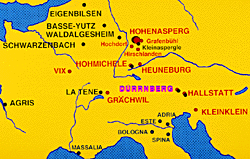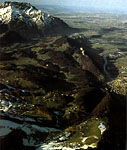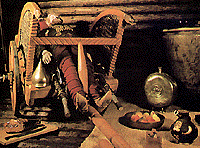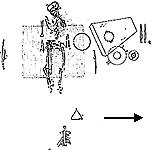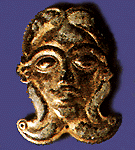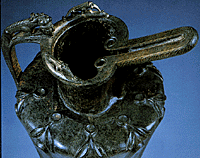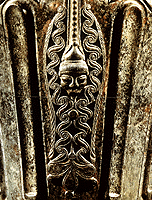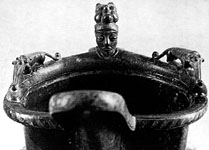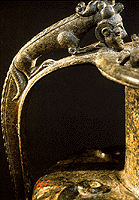
The Dürrnberg area seen from the south:
Hallein Tomb 44/2: Reconstruction of lower burial in Hallein Tomb 44 as displayed in open-air museum, Dürrnberg.
Bronze attachments of flagon
Height of head: ca. 8.3 cm.
Hallein tomb 112: This tomb was badly distrurbed; most items of value had been removed and even the pottery was damaged when the tomb was excavated by the amateur Klose in 1932. The stone packing around the chamber, the flagon, the preserved remains of iron hardware from a two-wheeled chariot and an iron knife are all that remain. The tomb has, of course, been interpreted as that of a male warrior -- however, in the absence of a skeleton and weapons, there is no evidence favoring either sex. The startling new find of a similar flagon at the Glauberg in Germany provides an interesting comparandum.

